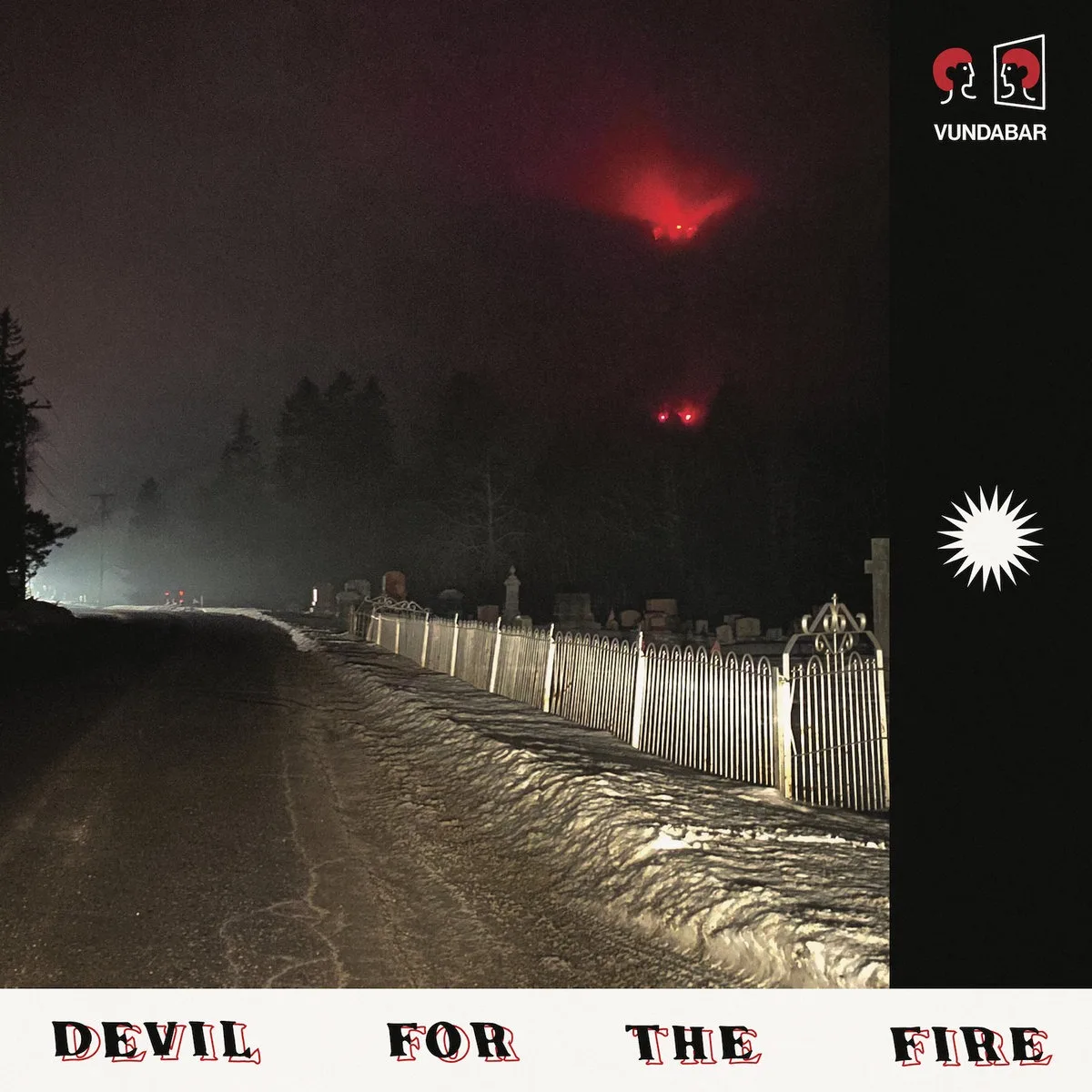National Music Reviews
Vundabar
Devil for the Fire
Gawk Records
Street: 04.09
Vundabar = Surf Curse x The Cure
Showcasing a newly mellowed-out, elevated sound tinged with the anthemic indie rock that earned the Boston-based trio their fame, Devil for the Fire is Vundabar’s fifth full-length album and the fourth to be released on their independent record label. If—like me—you’ve had the album Gawk on repeat since it was released in 2015, this latest offering will delight and surprise you. If you only recently became privy to Vundabar via their seven-year-old track “Alien Blues” that’s been circulating on TikTok, this newest album might just confuse you (more on that later).
Most recently, the album Either Light (2020) foretold Vundabar’s new emphasis on softer, chamber-type vocals rather than the quiet/loud dynamic featured on the rest of their discography. Now fully immersed in this fresh sound, Vundabar’s gratifyingly melodic and guitar-driven songwriting remains intact on Devil for the Fire—as does their knack for writing songs that dare listeners to sing along with vocalist Brandon Hagen’s challenging octave ballets.
It’s impossible that the album’s first track, “Aphasia,” could have been featured on the early-aughts cult classic film Donnie Darko, but it would have fit in between Joy Division and Echo and the Bunnymen if given the chance. The band grapples with all manner of nightmarish themes throughout the album’s nine tracks, which is only emphasized by Hagen’s scattered guitar playing in songs like “Ringing Bell.” “Head becomes the hand becomes the knife becomes the mind / Hazmat psychic suit sweeping through the siding / I wanna be reborn but how many times do I gotta die?,” Hagen sings on the album’s ominous title track, which sounds like it could narrate a nightmarish journey through Dante’s fifth circle of hell.
Five of the tracks on Devil for the Fire were released as an EP in 2020, and the rest of the album—the songs not included on the EP—are less directional. There are elements of surf rock throughout them, especially in “The Gloam.” Pop-driven melodies lead tracks like “Heat Wave” and “Listless Blue.” Finally, “Nosferatu” and “Deep Water” showcase all the classic Vundabar sounds—riffs that end abruptly, upper-register vocals and that signature quiet/loud dynamic.
Given that Vundabar’s first album was released when the original two band members were still in high school, it’s clear they’ve always been lucky to find youthful success as musicians. Fans of 2015’s Gawk might be surprised to learn that the band is finally receiving the widespread acclaim they deserve for nominal tracks like “Alien Blues” on a massive scale.
As with a handful of other lucky music artists that have written songs perfectly poised for today’s TikTok era (looking at you, Ritt Momney), Vundabar has experienced its greatest surge of fame in the last year. “Alien Blues” recently got swept up in the TikTok algorithm, and the seven-year-old song was streamed over one million times per day at the height of the hype. At the time of this writing, Vundabar now has over four million monthly listeners. The release date for Devil for the Fire was extended multiple times for reasons I suspect are connected to this unexpected surge, as the band has since focused their time promoting “Alien Blues” with the release of a new music video, a redux version featuring Indigo de Souza and a performance of the song on Late Night with Seth Meyers last month.
All this is to say that, as a longtime fan, I can’t wait to see where the rekindled fame of Vundabar’s 2015 album will take them in relation to the trajectory that Devil for the Fire prophesies. Will the trio revert to the spastically high-energy, riff-heavy tracks of their youth, or will Vundabar’s next album further them into this newfound, eerie, retro-laced chamber rock? Only time will tell—but whatever the case, they’ll do it well. –Mekenna Malan
Read more reviews of indie rock albums here:
Review: Howless – To Repel Ghosts
Review: A Place to Bury Strangers – See Through You
